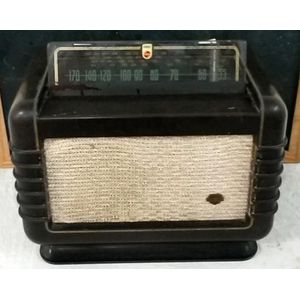Art Deco Watch and Bracelet Set with Marcasite
You must be a subscriber, and be logged in to view price and dealer details.
Subscribe Now to view actual auction price for this item
When you subscribe, you have the option of setting the currency in which to display prices to $Au, $US, $NZ or Stg.
- Art Deco Period - The Art Deco period was a cultural movement that emerged in the 1920s and 1930s, and was characterized by its emphasis on modernism, luxury, and elegance. The name "Art Deco" comes from the Exposition Internationale des Arts Décoratifs et Industriels Modernes, a large exhibition held in Paris in 1925 that showcased the latest trends in decorative arts.
Art Deco was a reaction against the ornate and elaborate styles of the previous era, and reflected a new modern sensibility. It was characterized by streamlined, geometric shapes, bright colours, and the use of new materials such as chrome, glass, and Bakelite. Art Deco designers sought to create a sense of luxury and sophistication, often incorporating expensive materials such as ivory, marble, and rare woods.
Art Deco had a significant impact on a wide range of artistic fields, including architecture, fashion, graphic design, and interior design. Some of the most iconic examples of Art Deco architecture include the Empire State Building in New York City, the Hoover Building in London, and the Palais de Chaillot in Paris.
The Art Deco period came to an end in the 1940s, as World War II and changing cultural trends led to a shift in artistic styles. However, Art Deco remains an important influence on design and art, and continues to be celebrated for its modernist sensibility and glamorous aesthetic. - Marcasite - Marcasite is a mineral, iron sulphide, but is rarely used in jewellery. Instead marcasite is the name given to iron pyrites, the mineral sold as marcasite which is identical in copmosition to iron sulphide but crystalises as a cube, making it more suitable for jewellery. It is a brassy yellow in colour and is also known as "fool's gold", and sits well with silver rather than gold becasue of its colour.
Marcasite has been used in jewellery since ancient times and became popular again in jewellery in the 18th century, continuing through to the early 20th century, with the settings becoming cheaper as time progressed, eventually earning the sobriquet "costume jewellery" along with other cheap jewellery that was made for a prevailing pattern and meant to be changed with each new outfit.
Visually similar items

Two boxed sterling silver cruet sets, 1937 and 1946/54 Birmingham with maker's mark for Suckling Ltd, each comprising a salt, mustard pot, a pepper shaker and two spoons, one of compressed style with curvaceous feet, the other with pierced borders; glass l

An 18ct white gold diamond ring; centring 18 princess cut diamonds to ribbed shoulders set with baguette and tapered baguette diamonds. Estimated diamond weight 58 = 2.58ct, F/G, VVS Vs. Size N. Weight 11.3g

Mallard, New Zealand late 1940s, model 558, 5 valves, mantel Bakelite cabinet with a correct sized Philips glass dial scale, but unoriginal to this set

Assorted Victorian gold brooches and ear ring
